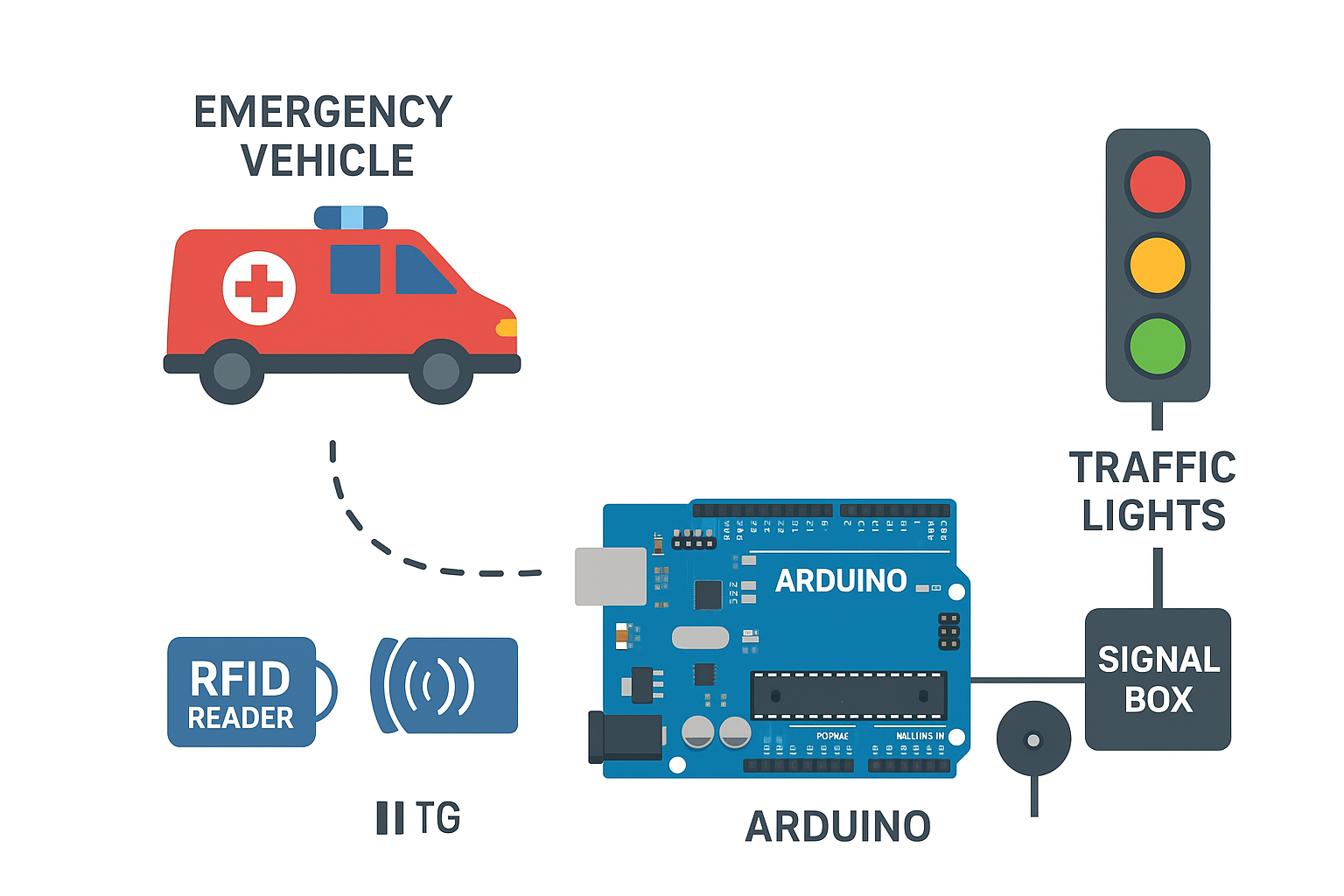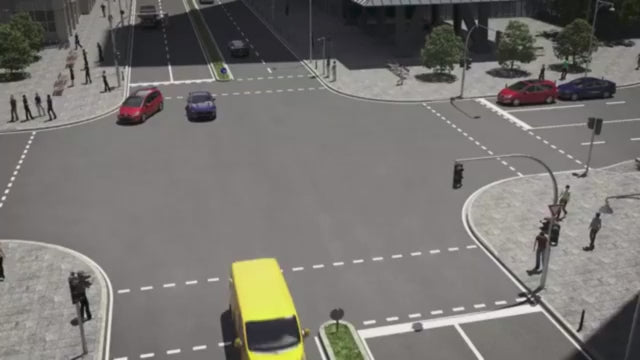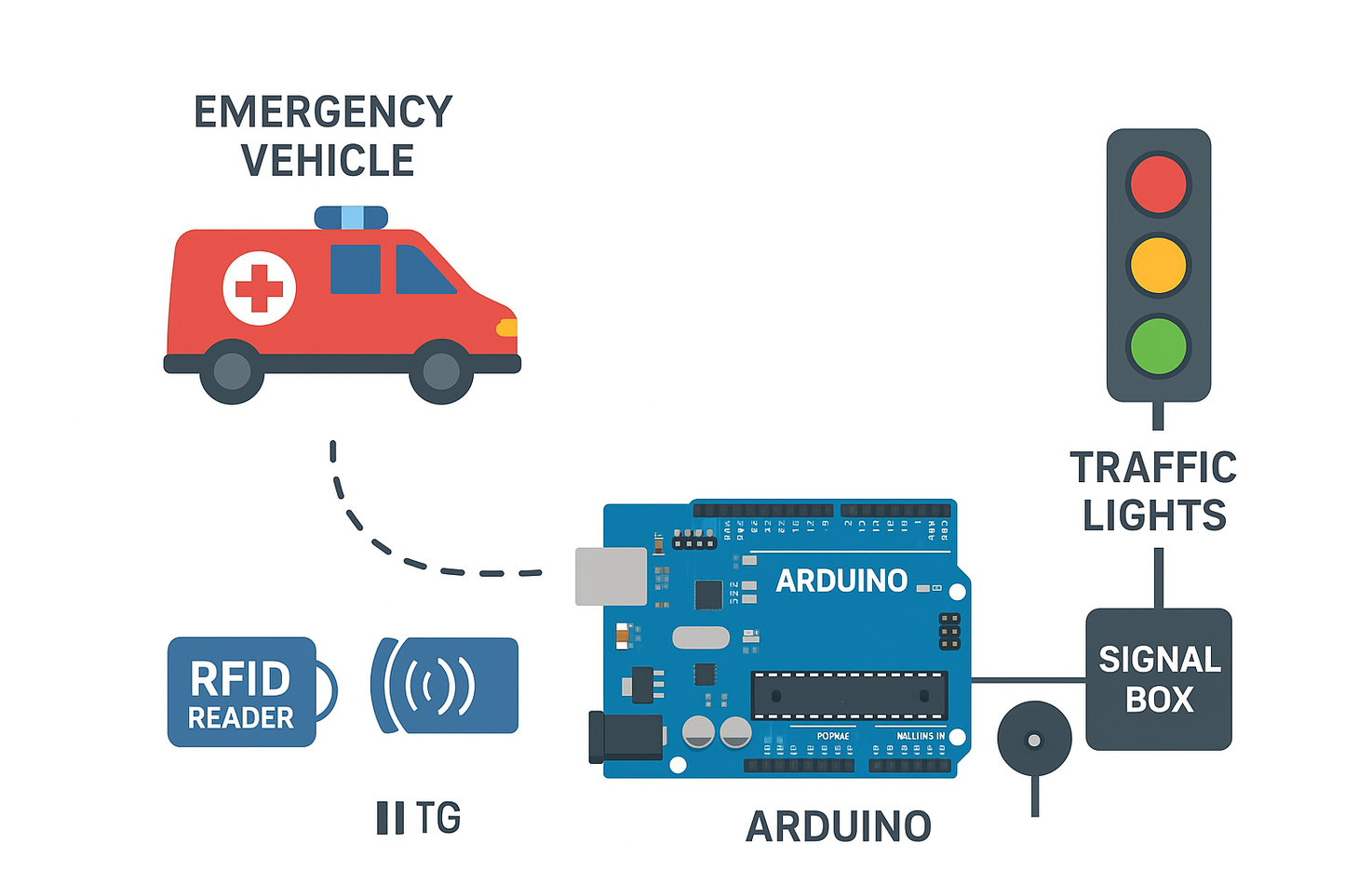🔹 Project Overview
Traffic congestion often delays ambulances, fire trucks, and police vehicles. In this project, we design a smart traffic signal that detects an approaching emergency vehicle and automatically turns its lane green, clearing the way.
🔹 Working Principle
-
Emergency vehicle carries an RFID tag (or uses GPS/LoRa/Bluetooth module).
-
At intersections, RFID/GPS receivers are installed near the traffic lights.
-
When the system detects the emergency vehicle’s signal → it overrides the normal traffic sequence.
-
Traffic light turns green on that lane and red on others until the vehicle passes.
-
After clearance, the system returns to normal operation.
🔹 Components Required
-
Arduino Uno / Mega – microcontroller to control lights
-
RFID reader (RC522) + RFID tag – for emergency vehicle identification
(Alternative: LoRa / Bluetooth HC-05 / GPS module if you want wireless detection) -
Traffic Light LEDs (Red, Yellow, Green) – 3 LEDs per lane
-
Buzzer – optional, to alert nearby drivers
-
Relay Module – if controlling real signal lights
-
Power Supply (5V or 12V)
-
Jumper wires + Breadboard
🔹 Block Diagram
🚑 Emergency Vehicle → (RFID/GPS/Bluetooth) → Receiver near signal → Arduino → Traffic Lights
🔹 Arduino Logic (Simplified Flow)
-
Default mode: Traffic lights follow a timed sequence (Red → Green → Yellow).
-
Emergency detected: Override timer → turn green for emergency lane, red for others.
-
After vehicle passes: Resume normal cycle.
🔹 Real-Life Applications
✅ Reduces ambulance response time
✅ Helps fire trucks & police reach destinations faster
✅ Can be scaled for Smart City traffic management
✅ Integrates with IoT for centralized traffic monitoring
⚡ This project is scalable — you can start with Arduino + RFID + LEDs (prototype) and later expand with LoRa/GPS + real traffic light controllers.













